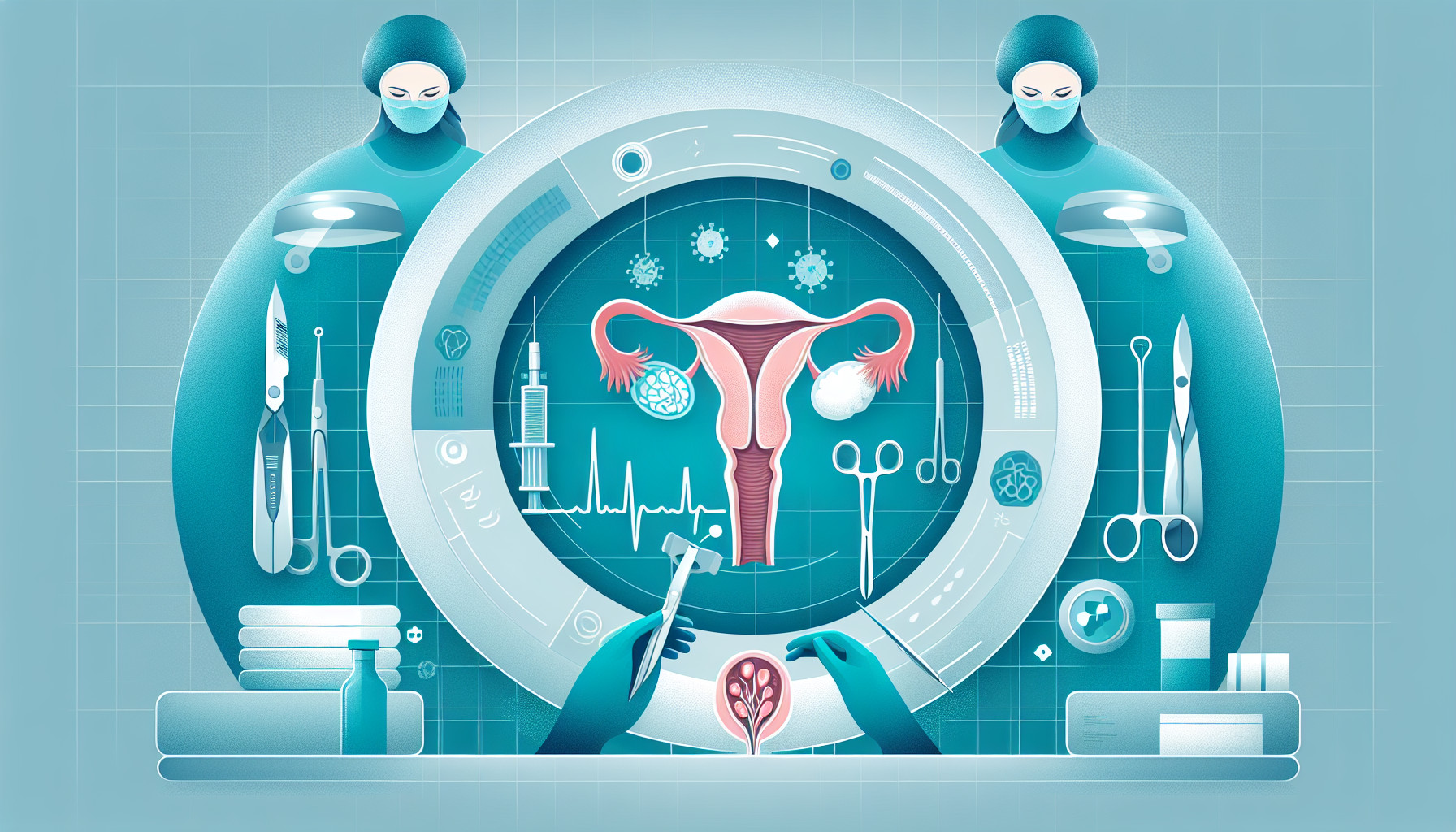Our Summary
This research paper discusses a new 5-step surgical technique for safely removing large ovarian cysts using only a single small incision, rather than the traditional large cuts. This method aims at preventing the cyst from rupturing and causing contamination inside the abdomen. The approach involves first inspecting the abdomen for any signs of cancer spread that would make the procedure unsuitable. Then, the cyst is prepared, the outer layer is dried and a piece of sterile glove is used to create a protective membrane. The next steps involve applying surgical glue and stitching to hold everything in place, making a cut in the cyst, and then using a special tool to suck out the fluid. Once all the cyst fluid is removed, the area is sealed off to prevent any contamination inside the abdomen. Finally, the cyst or ovary is removed using a small incision. The technique is a safer and less invasive way to remove large ovarian cysts, while still protecting against potential cancer spread and internal contamination.
FAQs
- What is the new 5-step surgical technique for removing large ovarian cysts?
- How does the new method prevent the cyst from rupturing and causing contamination inside the abdomen?
- Is this new technique a safer and less invasive way to remove large ovarian cysts compared to traditional methods?
Doctor’s Tip
The doctor might advise the patient to follow post-operative care instructions carefully, including taking prescribed pain medications, avoiding heavy lifting or strenuous activity, and watching for signs of infection such as fever, increased pain, or redness at the incision site. It is important for the patient to attend follow-up appointments to monitor healing and ensure there are no complications. The doctor may also recommend lifestyle changes, such as maintaining a healthy weight and regular exercise, to reduce the risk of developing more ovarian cysts in the future.
Suitable For
Patients who are typically recommended for ovarian cyst removal include:
- Patients with large ovarian cysts that are causing symptoms such as pelvic pain, bloating, or pressure on nearby organs.
- Patients with ovarian cysts that are growing rapidly or are at risk of rupturing.
- Patients with complex ovarian cysts that are suspicious for cancer or have features that warrant further evaluation.
- Patients with recurrent ovarian cysts that have not responded to conservative management or have caused complications.
- Patients with a family history of ovarian cancer or a personal history of cancer that may increase their risk for developing ovarian cancer.
Overall, the decision to recommend ovarian cyst removal is based on the size, type, and symptoms associated with the cyst, as well as the individual patient’s risk factors and preferences. It is important for patients to discuss their options with their healthcare provider to determine the most appropriate course of action for their specific situation.
Timeline
Before ovarian cyst removal:
- Patient may experience symptoms such as abdominal pain, bloating, nausea, and changes in menstrual cycle.
- Patient may undergo imaging tests such as ultrasound or MRI to confirm the presence of an ovarian cyst.
- Consultation with a gynecologist to discuss treatment options and the risks and benefits of surgery.
- Pre-operative preparation including fasting before surgery and possibly taking medications to reduce the risk of infection.
After ovarian cyst removal:
- Patient may experience some pain and discomfort at the incision site, which can be managed with pain medication.
- Patient may be advised to avoid heavy lifting and strenuous activities for a period of time to allow the incision to heal properly.
- Follow-up appointments with the gynecologist to monitor recovery and ensure that there are no complications.
- Patient may need to undergo further testing, such as blood tests or imaging studies, to ensure that the cyst was completely removed and to monitor for any recurrence.
- Patient may experience relief from the symptoms that were caused by the ovarian cyst, such as abdominal pain and bloating.
What to Ask Your Doctor
- What are the risks and potential complications associated with ovarian cyst removal surgery?
- How long is the recovery period after surgery and what can I expect in terms of pain and discomfort?
- Will I need to stay in the hospital overnight after the surgery or is it an outpatient procedure?
- Will removing the cyst affect my fertility or hormonal balance?
- Are there any alternative treatments or less invasive methods available for removing the cyst?
- How often do ovarian cysts reoccur after removal and what can be done to prevent future cysts?
- How will the surgical technique described in the research paper benefit me compared to traditional methods of cyst removal?
- What is the success rate of this new surgical technique and how experienced are you in performing it?
- Are there any specific dietary or lifestyle changes I should make before or after the surgery to aid in my recovery?
- Can you provide me with references or additional information about this new 5-step surgical technique for removing ovarian cysts?
Reference
Authors: El Hajj H, Hudry D, Gomez CM, Boscher A, Duchatelet M, Leblanc E, Narducci F. Journal: J Minim Invasive Gynecol. 2022 Sep;29(9):1038-1039. doi: 10.1016/j.jmig.2022.06.018. Epub 2022 Jun 23. PMID: 35753617
